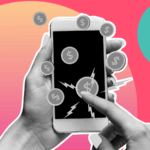Why Post-Pandemic Brands Shouldn’t Make Things Too Easy for People
by Sarah Priestman, President of Sense NYC
It goes without saying that the COVID-19 pandemic has made our lives harder. But, in a strange way, it’s made them easier too.
As our lives have turned inwards, our days have become “smoothed out”; robbed of the unpredictability, texture, and friction which we once took for granted. Much of this smoothness has been facilitated by brands. And for the most part, this has been appropriate. But now, as we approach 2021 with little confidence in things returning to normal any time soon, is it time for brands to help add some much-needed friction back into people’s lives?
One of the defining social changes brought about by the pandemic, is that people are becoming spectators, rather than participators, in the game of life. We are watching the world through a suite of screens, rather than genuinely contributing to it. Reality is something that is occurring “out there” rather than being a state we are enmeshed in, with 57% voluntarily shrinking from their friends and community, and 51% reporting a “significant increase” in their consumption of entertainment media.
At first glance, this “spectator lifestyle” can seem attractive. It’s smooth. It’s safe. It’s predictable. It’s on-demand and generally feels “controllable”. Like a Facebook newsfeed populated only by content tailored for your personal tastes, it’s endless and frictionless.
But friction – whilst perhaps uninvited, inconvenient, and uncomfortable – is also what creates sparks.
Just think of your own life: chances are that the key turning points were not things you carefully planned, but random happenstance that came about as a result of participation in the world. Exposure to risk, volatility, and friction – the very things which our current comfortable smooth spectator lives drastically lack.
In sum, we are suffering from a serendipity deficit.
Now it would be foolish to suggest this is a problem brands can “solve”. But they can do the next best thing: provide a counterweight. And at this moment that means injecting serendipity – or at least a simulation of serendipity – into people’s lives; a process we call “frictioning”.
How do you do it? By combining three simple principles:
Be singular
Rather than focusing on creating content that can be consumed by millions, the aim of friction is to directly involve every individual you reach. If it generates sharable content so much the better, but the primary targets of the activity must be engaged with on a one-to-one level.
For example, when Amazon distributed AR enabled boxes on Prime Day, which turned into a carve-able pumpkin when viewed through their app, each recipient became involved personally. The goal wasn’t to produce viral content; it was to produce mass participation on a singular level.
Be unpredictable
Although video content can be surprising and entertaining, it can never be truly unpredictable. We know that there is a galaxy of great things to watch out there, and we can access it any time we want. Frictional moments are those which crop up when we’re least expecting it – which interject themselves into our day and (in a small way) disrupt our plans.
Who would have expected Burger King delivery vehicles to one day transform into Pride Parade floats, to fill the vacuum left by the inability to hold the normal festivities in Spain due to the pandemic? Moments like this shake us from our inertia and make us realize that even under the conditions of the serendipity deficit, the disruption can still occur.
Be demanding
The final ingredient, which truly adds a touch of spice, is to be demanding. As we know, you can have too much of a good thing – and on-demand entertainment, with no requirements on us, is certainly one such example. Therefore, brands shouldn’t be afraid to make consumers work; to issue them with a challenge or call to arms.
When the outdoor outfitter Merrell launched their new voice app, which aimed to guide you to nearby trails, it set an expectation; an expectation that you would listen and respond. In this on-demand DTC era, which has been accelerated by 2020, there’s no harm in making people do a little work.
If 2020 was the year of addressing concerns about the virus, then 2021 will be the year of addressing concerns about the recovery. These concerns will be different, and so will the appropriate response. I believe that counterintuitive as it may seem, friction is that response. And the rewards for the brands prepared to reintroduce serendipity to our lives will quickly become apparent.







